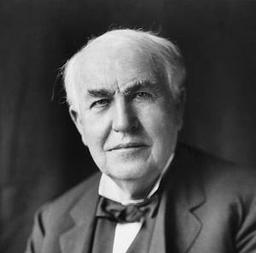15 Quotes
"when it comes to long-term crises, humanity’s record is less exemplary. Our response to the climate emergency – which is already here but whose greatest impacts are yet to come – has been painstakingly slow."
— Roman Krznaric
How Humans Grew Acorn Brains"The Marshmallow Brain is an ancient part of our neuroanatomy, around 80 million years old, that focuses our minds on instant rewards and immediate gratification."
— Roman Krznaric
How Humans Grew Acorn Brains"the ability to delay gratification is highly dependent on socioeconomic position: those from wealthier backgrounds find it easier to resist the treat, while a lack of trust and fear of scarcity can push kids towards gobbling it up."
— Roman Krznaric
How Humans Grew Acorn Brains"Alongside the Marshmallow Brain we also possess a long-term Acorn Brain located in the frontal lobe just above our eyes, especially in an area known as the dorsolateral prefrontal cortex."
— Roman Krznaric
How Humans Grew Acorn Brains"This is a relatively new part of our neuroanatomy – a mere two million years old – giving us a rare ability to think, plan and strategize over long timeframes."
— Roman Krznaric
How Humans Grew Acorn Brains"If we are going to tackle long-term challenges like the ecological crisis, we will need to use this unrivaled ability to become part-time residents of the future."
— Roman Krznaric
How Humans Grew Acorn Brains"The human capacity to think long term “is one of the brain’s most stunning innovations,” writes the psychologist Dan Gilbert"
— Roman Krznaric
How Humans Grew Acorn Brains"Evolutionary psychologists and archaeologists offer four main explanations for how our brains evolved this remarkable cognitive ability to think and plan over long timespans."
— Roman Krznaric
How Humans Grew Acorn Brains"First is a survival skill known as “wayfinding.” Over a period of two million years our protohuman ancestors developed a capacity to orient themselves in physical space and navigate from place to place when they went on hunting or foraging expeditions, or roamed in search of shelter."
— Roman Krznaric
How Humans Grew Acorn Brains"A second enabler of long-term brains, sometimes known as the “grandmother effect,” relates to the growing evidence that the presence of grandparents – especially maternal grandmothers – is important for reducing infant and child mortality."
— Roman Krznaric
How Humans Grew Acorn Brains"Recent research from anthropologists and evolutionary biologists reveals that older post-reproductive females provide vital childcare, knowledge and other forms of support that increase the survival chances of the young."
— Roman Krznaric
How Humans Grew Acorn Brains"Relationships of trust and reciprocity work best when people know that the help they give to someone in the present will likely be returned at a future date, when they are in need themselves: time is woven into the fabric of mutual aid."
— Roman Krznaric
How Humans Grew Acorn Brains"A final explanation concerns the human genius for toolmaking."
— Roman Krznaric
How Humans Grew Acorn Brains"According to historian of technology Sander Van der Leeuw, as our brains grew and we developed the ability to make complex tools, we also developed “the capacity to plan and execute complex sequences of actions.” The ability to plan making a stone tool enabled us to plan other forward-looking actions with long time horizons such as crop rotation or building a pyramid."
— Roman Krznaric
How Humans Grew Acorn Brains"Studies of economics students have shown that those who are taught that human beings are essentially rational, self-interested creatures are more likely to act selfishly after completing their courses than their freshman counterparts."
— Roman Krznaric
How Humans Grew Acorn BrainsExplore More Quotes 📚
Want to Save Quotes?
Glasp is a social web highlighter that people can highlight and organize quotes and thoughts from the web, and access other like-minded people’s learning.












-sporring.jpeg&w=256&q=75)




